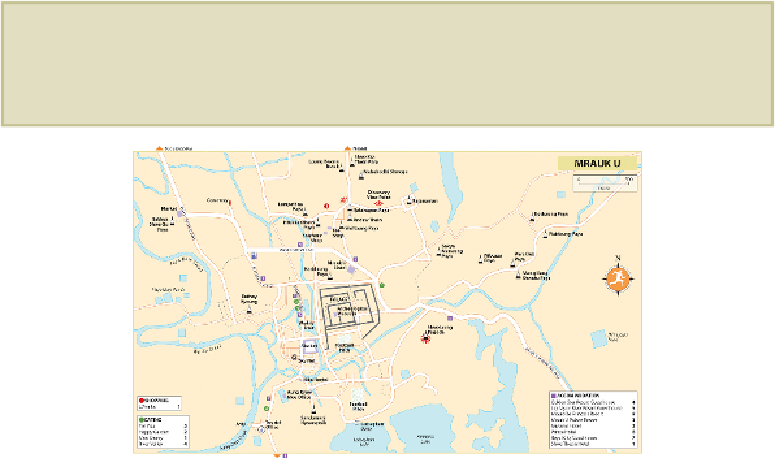Travel Reference
In-Depth Information
the city also faced off Portuguese incursions and later served as a major pan-Asian trading
base.TheconquestandsackofthecityatthehandsoftheKonbaungdynastyin1784brought
Mrauk U's glory days to an end, while the British decision to move the provincial capital to
Sittwe in 1826 further hastened its decline. Lasting mementoes of Mrauk U's glory days sur-
vive, however, in the shape of a unique collection of remarkable fortified
temples
- among
Asia's weirdest Buddhist monuments.
Forthetraveller,MraukUhasalwayshadapeculiarallure,andnowadayspullsinasteadily
growing number of foreign visitors, notwithstanding the difficulty of reaching the place or
recent troubles in Rakhine (the town has frequently been off limits in recent years due to loc-
al unrest). Few people who make the effort of reaching the place regret it, even if the town is
now increasingly entering the tourist mainstream and has now lost much of its final-frontier
allure-anewairportandrailwaylineareplanned,whiletherearealsorumoursthatthegov-
ernment plans to evict inhabitants from their old houses among the temples (as happened in
Old Bagan) in order to develop it as a tourist attraction.
Around Mrauk U
, interesting day-trips along the Lemro River offer a rare opportunity to
visit
Chinvillages
andseesomeofthefamoustattooedladieswholivethere,whiletheslight
remains of the former Arakanese capitals of
Dhanyawadi
and
Waithali
can also be seen.
One popular theory holds that the
name
Mrauk U is a corruption of
myauk u
, meaning
“MonkeyEgg”,saidtohavebeenofferedtotheBuddhabyamonkeyasasignofhisdevo-
tion. It's pronounced “Mrow-Oo” by the Rakhine, or as a rather feline-sounding “Meow-
Oo” by the Burmese.

